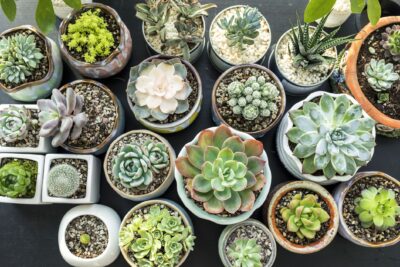
Can You Identify These Gorgeous Succulents?

When it comes to indoor plants, succulents have become increasingly popular among plant enthusiasts. These unique plants are known for their thick, fleshy leaves and ability to thrive in dry conditions. With their wide variety of shapes, sizes, and colors, succulents have become a favorite choice for both experienced and novice gardeners.
We will explore some of the most stunning succulents and test your knowledge of these beautiful plants. From the well-known Aloe Vera to the lesser-known Echeveria 'Lola', we will showcase a range of succulents and challenge you to identify them correctly. Whether you are a succulent aficionado or just starting your plant collection, this article will provide an exciting opportunity to test your knowledge and learn more about these gorgeous plants.
- Look for unique leaf shapes and textures
- Pay attention to the color and pattern of the leaves
- Check for any distinctive markings or variegation
- Research popular succulent species and compare them to your plants
- Consult a plant identification guide or app
- Seek help from a knowledgeable plant enthusiast or botanist
- Join online forums or social media groups dedicated to succulent identification
- Take clear photos of your succulents and post them for others to help identify
Look for unique leaf shapes and textures
When it comes to identifying gorgeous succulents, one of the key factors to look out for is their unique leaf shapes and textures. Succulents are known for their ability to store water in their leaves, stems, and roots, which gives them their characteristic plump and fleshy appearance. This adaptation allows them to thrive in dry and arid climates.
One of the most common leaf shapes among succulents is the rosette. Rosette-shaped succulents have leaves that grow in a circular arrangement around a central point, resembling a rose. This leaf pattern can be seen in popular succulents such as Echeveria, Sempervivum, and Aeonium.
On the other hand, some succulents have elongated leaves that grow in a linear or lanceolate shape. These succulents often have a more architectural and sculptural look, with leaves that can be pointed or have serrated edges. Examples of succulents with this leaf shape include Sansevieria, Agave, and Haworthia.
In addition to leaf shapes, succulents also exhibit a wide range of textures. Some succulents have smooth and glossy leaves, while others have leaves covered in tiny hairs or spines. These textures not only add visual interest but also serve as a defense mechanism against herbivores and excessive evaporation.
When trying to identify succulents, pay attention to the unique combination of leaf shapes and textures they possess. By observing these distinct features, you will be able to differentiate between various succulent species and appreciate the diversity within this stunning plant family.
 Ultimate Guide: Identifying Succulents and Getting the Help You Need
Ultimate Guide: Identifying Succulents and Getting the Help You NeedPay attention to the color and pattern of the leaves
When it comes to identifying succulents, one of the key factors to pay attention to is the color and pattern of the leaves. Succulents come in a wide range of colors, from vibrant greens and blues to rich purples and pinks. Some succulents even have variegated leaves, with different colors or patterns on the same plant.
Check for any distinctive markings or variegation
Succulents are known for their unique and eye-catching appearance. One way to identify different varieties of succulents is by looking for distinctive markings or variegation on their leaves. These markings can come in a variety of patterns, including stripes, spots, or even intricate designs.
When examining a succulent, pay close attention to the color and texture of its leaves. Look for any contrasting colors or patterns that make it stand out from other succulents. For example, some succulents have leaves with vibrant red or purple edges, while others may have leaves with striking zebra-like stripes.
Additionally, some succulents have leaves with variegated patterns, meaning they have patches or streaks of different colors. These variegations can range from subtle to bold, and can add a unique touch to the overall appearance of the succulent.
By carefully observing the markings and variegation on the leaves, you can begin to identify different types of succulents and appreciate the beauty of their individual characteristics.
Research popular succulent species and compare them to your plants
When it comes to succulents, there is an incredible variety of species to explore. By researching popular succulent species, you can gain a deeper understanding of the different types of plants and compare them to the ones you already have in your collection.
Here are some stunning succulent species that you should definitely be familiar with:
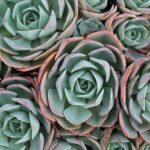 Identifying Signs of Growth in Succulent Plants: A Guide
Identifying Signs of Growth in Succulent Plants: A Guide1. Echeveria
Echeveria is a popular succulent known for its rosette-shaped leaves and vibrant colors. With its thick, fleshy leaves that come in shades of green, blue, pink, and purple, Echeveria is a true eye-catcher in any garden or indoor arrangement.
2. Sedum
Sedum, also known as stonecrop, is a diverse genus of succulents that includes a wide range of species. From low-growing groundcover types to tall, upright varieties, Sedum offers an array of textures and colors. Some sedums even produce beautiful clusters of tiny star-shaped flowers.
3. Aloe
Aloes are iconic succulents that are well-known for their medicinal properties and striking appearance. With their spiky, fleshy leaves and vibrant blooms, aloes add a touch of drama to any garden or indoor space.
4. Crassula
Crassula, commonly known as jade plants, are popular succulents that are easy to grow and maintain. These plants have thick, glossy leaves and are often associated with good luck and prosperity.
5. Haworthia
Haworthia is a genus of small succulents that are loved for their unique rosette-like growth habit and often have striking patterns on their leaves. These plants are perfect for small spaces and make excellent additions to your succulent collection.
By familiarizing yourself with these popular succulent species, you can accurately identify and appreciate the gorgeous plants you have in your collection. Whether you're a seasoned succulent enthusiast or just starting out, exploring the diverse world of succulents is always a rewarding experience.
Consult a plant identification guide or app
 Discover a Comprehensive PDF Guide with Pictures of Various Succulents
Discover a Comprehensive PDF Guide with Pictures of Various SucculentsIf you are having trouble identifying a specific succulent, one of the easiest and most convenient ways to get the answers you seek is by using a plant identification guide or app. These resources can provide valuable information about various succulent species, helping you to narrow down your options and identify the exact plant you are looking for.
When using a plant identification guide or app, it is important to provide as much information as possible. This may include details such as the color, size, shape, and texture of the succulent's leaves, as well as any unique characteristics or markings. By inputting this information into the guide or app, you can receive accurate suggestions and potential matches for your unidentified succulent.
Some popular plant identification guides and apps include:
- PlantSnap: This app uses advanced artificial intelligence technology to identify plants based on photographs. Simply snap a picture of the succulent and let PlantSnap do the rest.
- iNaturalist: This online community of plant enthusiasts and experts can help identify your succulent by uploading a photo and providing additional details.
- Flora Incognita: This app specializes in identifying plant species, including succulents. It uses image recognition technology to provide accurate identifications.
Remember, while these resources can be extremely helpful in identifying succulents, it is always a good idea to cross-reference the suggestions with other sources and consult with experts to ensure the accuracy of your identification.
Seek help from a knowledgeable plant enthusiast or botanist
Identifying succulents can be a challenging task, especially if you are a novice in the world of plants. However, fear not! There are ways to seek help and guidance in identifying these gorgeous succulents.
One of the best ways to get accurate identification is to consult a knowledgeable plant enthusiast or a botanist. These individuals have extensive knowledge and experience in identifying different species of succulents. They can provide you with expert guidance and help you determine the exact name and characteristics of the succulent you are trying to identify.
When seeking help from a plant enthusiast or botanist, make sure to provide them with as much information as possible. Describe the succulent's physical attributes, such as its size, shape, color, and texture. Additionally, mention any unique features or patterns that you have noticed. These details will assist the expert in narrowing down the possibilities and providing a more accurate identification.
 Unveiling the Enigmatic World of Succulent Growths
Unveiling the Enigmatic World of Succulent GrowthsAnother helpful approach is to take clear and detailed photographs of the succulent from different angles. Capturing close-up shots of the leaves, stems, and flowers can greatly aid in the identification process. Make sure the photos are well-lit and showcase the distinct characteristics of the succulent. You can then share these images with the plant enthusiast or botanist, either in person or through online platforms, for a better analysis.
It's important to note that some succulents may have similar appearances, making identification challenging even for experts. In such cases, they may need to rely on additional tools, such as botanical keys or advanced techniques, to accurately determine the species. Patience and collaboration with knowledgeable individuals will significantly increase your chances of successful identification.
If you find yourself struggling to identify a beautiful succulent, reach out to a plant enthusiast or botanist for assistance. Their expertise and guidance will help you unravel the mystery behind these stunning plants.
When it comes to identifying gorgeous succulents, one of the best resources available to you is joining online forums or social media groups dedicated to succulent identification. These communities are filled with experienced succulent enthusiasts who are always eager to help fellow plant lovers in identifying their succulents.
By joining these groups, you gain access to a wealth of knowledge and expertise. Members often share photos of their own succulents, allowing you to compare and find potential matches for your unidentified plants. Additionally, you can post pictures of your succulents and ask for assistance in identifying them. It's a great way to engage with a community of like-minded individuals who share your passion for these beautiful plants.
Benefits of joining succulent identification communities:
- Expert advice: Interact with experienced succulent enthusiasts who can provide accurate and reliable identification.
- Access to a diverse plant collection: Explore a wide variety of succulents posted by community members, expanding your knowledge of different species.
- Opportunities to learn: Engage in discussions, ask questions, and learn about the unique characteristics of different succulent species.
- Discover new varieties: Get inspired by discovering new and rare succulent varieties that you may have never come across before.
- Connect with fellow succulent lovers: Share your passion for succulents with a community of like-minded individuals and build connections.
Remember to be respectful and considerate when seeking help in these communities. Take clear and well-lit photos of your succulents, highlighting any distinctive features that might aid in identification. Provide as much information as possible, such as the size, color, and growth pattern of the plant, to help the community members in their identification efforts.
So, don't hesitate to join these online succulent identification communities. They can be invaluable resources for both beginners and experienced succulent enthusiasts, helping you unravel the mysteries behind your gorgeous succulents.
 Help! Can you identify this succulent with unique leaves?
Help! Can you identify this succulent with unique leaves?Take clear photos of your succulents and post them for others to help identify
If you're a succulent lover like me, you probably have quite a collection of these beautiful plants. But have you ever come across a succulent and had no idea what it was called? Don't worry, you're not alone! With so many different varieties and species of succulents out there, it can be challenging to identify them all.
But fear not! Thanks to the power of the internet and online plant communities, you can now seek help from fellow succulent enthusiasts to identify those mystery plants in your collection.
How to get started?
The first step in identifying your succulent is to take clear and detailed photos of it. Make sure to capture the unique characteristics of the plant, such as the shape and color of the leaves, the arrangement of the rosettes, and any distinctive patterns or textures. The more information you can provide, the easier it will be for others to help you identify your succulent.
Once you have your photos ready, it's time to share them with the online succulent community. There are various platforms and forums dedicated to succulent enthusiasts, where you can post your photos and ask for identification help.
Where to post your photos?
Here are a few popular platforms where you can seek help in identifying your succulents:
- Reddit: The r/succulents subreddit is a vibrant community of succulent lovers who are always eager to help identify unknown plants. Post your photos with a detailed description, and you'll likely receive multiple responses.
- Facebook Groups: There are numerous Facebook groups dedicated to succulent identification. Join some of these groups and share your photos, and you'll have a vast pool of succulent enthusiasts ready to assist you.
- Instagram: Instagram is not only a platform for sharing beautiful photos but also a place where you can connect with other succulent enthusiasts. Use relevant hashtags such as #succulentidentification or #plantcommunity and reach out to fellow succulent lovers.
Remember, when posting your photos, provide as much information as possible about your succulent. Mention its size, any known history or origin, and any specific details that might help in the identification process.
Be patient and grateful
Identifying succulents can sometimes be a challenging task, especially if they belong to rare or less common species. It's important to be patient and understanding when seeking help from others. While some identifications may be straightforward, others might require more time and research.
 Discover the Enchanting Succulent Plant with Spotted Leaves
Discover the Enchanting Succulent Plant with Spotted LeavesLastly, always express your gratitude to those who take the time to help you identify your succulents. Thank them for their assistance and acknowledge their expertise. This will not only show your appreciation but also encourage others to continue sharing their knowledge and helping fellow succulent enthusiasts.
So, next time you come across a stunning succulent but can't figure out its name, don't hesitate to reach out to the online succulent community for help. Together, we can uncover the mysteries behind these gorgeous plants!
Frequently Asked Questions
1. How do I identify succulents?
You can identify succulents by their thick, fleshy leaves, stems, or roots that store water. You can also look for specific characteristics like rosette or trailing growth patterns.
2. What are some common types of succulents?
Some common types of succulents include Echeveria, Aloe Vera, Jade Plant, String of Pearls, and Haworthia.
 Identifying a Succulent Plant with Scalloped Leaf Edges
Identifying a Succulent Plant with Scalloped Leaf Edges3. How can I differentiate between similar-looking succulents?
Pay attention to leaf shape, color, size, and texture. You can also observe the growth pattern, flower shape, and overall appearance to distinguish between similar succulents.
4. Where can I find resources to help me identify succulents?
There are various online resources and plant identification apps available that can help you identify succulents. You can also join gardening forums or consult local nurseries and botanical gardens for guidance.
If you want to read more articles similar to Can You Identify These Gorgeous Succulents?, you can visit the Identification category.

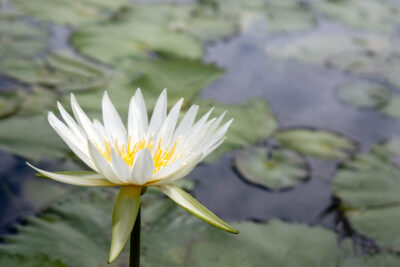
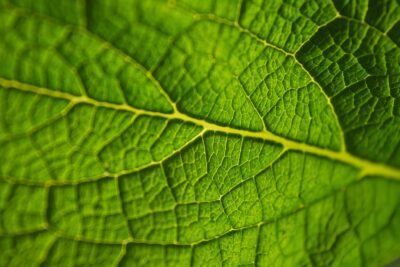
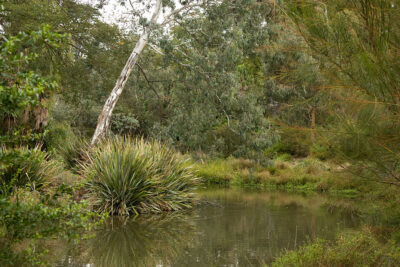

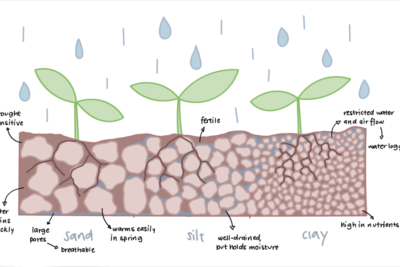
You Must Read